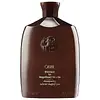What's inside
What's inside
 Key Ingredients
Key Ingredients

 Benefits
Benefits

 Concerns
Concerns

 Ingredients Side-by-side
Ingredients Side-by-side

Water
Skin ConditioningSodium Laureth Sulfate
CleansingCocamidopropyl Betaine
CleansingSodium Chloride
MaskingPiroctone Olamine
PreservativeClimbazole
AntimicrobialHydrolyzed Wheat Protein
Skin ConditioningC12-13 Alkyl Lactate
EmollientLactic Acid
BufferingButylene Glycol
HumectantZingiber Officinale Root Extract
MaskingSalicylic Acid
MaskingMenthol
MaskingRosmarinus Officinalis Leaf Oil
MaskingPolysorbate 20
EmulsifyingSodium Benzoate
MaskingPotassium Sorbate
PreservativeSorbic Acid
PreservativeWater, Sodium Laureth Sulfate, Cocamidopropyl Betaine, Sodium Chloride, Piroctone Olamine, Climbazole, Hydrolyzed Wheat Protein, C12-13 Alkyl Lactate, Lactic Acid, Butylene Glycol, Zingiber Officinale Root Extract, Salicylic Acid, Menthol, Rosmarinus Officinalis Leaf Oil, Polysorbate 20, Sodium Benzoate, Potassium Sorbate, Sorbic Acid
Water
Skin ConditioningDisodium Laureth Sulfosuccinate
CleansingSodium Lauroyl Sarcosinate
CleansingSodium Lauryl Sulfoacetate
CleansingCocamide Mea
EmulsifyingCocamidopropyl Hydroxysultaine
CleansingDecyl Glucoside
CleansingPolyglyceryl-3 Laurate
EmulsifyingSodium Lauroyl Lactylate
EmulsifyingCocoglucosides Hydroxypropyltrimonium Chloride
CleansingGlycerin
HumectantBehentrimonium Chloride
PreservativeRice Oil Glycereth-8 Esters
CleansingMethoxy PEG/PPG-7/3 Aminopropyl Dimethicone
Panthenol
Skin ConditioningHydrolyzed Vegetable Protein Pg-Propyl Silanetriol
Skin ConditioningSerenoa Serrulata Fruit Extract
Skin ConditioningLitchi Chinensis Pericarp Extract
Skin ConditioningHydrolyzed Lupine Protein
Skin ConditioningKaempferia Galanga Root Extract
Skin ConditioningLeontopodium Alpinum Extract
Skin ConditioningStyrax Benzoin Resin Extract
MaskingCitrullus Lanatus Fruit Extract
Skin ConditioningMoringa Oleifera Seed Extract
Skin ConditioningButylene Glycol
HumectantQuaternium-95
UV AbsorberHydrolyzed Keratin
HumectantKeratin
Skin ConditioningOctocrylene
UV AbsorberButyl Methoxydibenzoylmethane
UV AbsorberInulin Lauryl Carbamate
Emulsion StabilisingCaprylic/Capric Triglyceride
MaskingSucrose Laurate
EmollientPropanediol
SolventCitric Acid
BufferingPEG-150 Distearate
EmulsifyingDisodium EDTA
BHT
AntioxidantPhenoxyethanol
PreservativePotassium Sorbate
PreservativeSodium Benzoate
MaskingChlorphenesin
AntimicrobialMethylisothiazolinone
PreservativeParfum
MaskingHexyl Cinnamal
PerfumingLimonene
PerfumingWater, Disodium Laureth Sulfosuccinate, Sodium Lauroyl Sarcosinate, Sodium Lauryl Sulfoacetate, Cocamide Mea, Cocamidopropyl Hydroxysultaine, Decyl Glucoside, Polyglyceryl-3 Laurate, Sodium Lauroyl Lactylate, Cocoglucosides Hydroxypropyltrimonium Chloride, Glycerin, Behentrimonium Chloride, Rice Oil Glycereth-8 Esters, Methoxy PEG/PPG-7/3 Aminopropyl Dimethicone, Panthenol, Hydrolyzed Vegetable Protein Pg-Propyl Silanetriol, Serenoa Serrulata Fruit Extract, Litchi Chinensis Pericarp Extract, Hydrolyzed Lupine Protein, Kaempferia Galanga Root Extract, Leontopodium Alpinum Extract, Styrax Benzoin Resin Extract, Citrullus Lanatus Fruit Extract, Moringa Oleifera Seed Extract, Butylene Glycol, Quaternium-95, Hydrolyzed Keratin, Keratin, Octocrylene, Butyl Methoxydibenzoylmethane, Inulin Lauryl Carbamate, Caprylic/Capric Triglyceride, Sucrose Laurate, Propanediol, Citric Acid, PEG-150 Distearate, Disodium EDTA, BHT, Phenoxyethanol, Potassium Sorbate, Sodium Benzoate, Chlorphenesin, Methylisothiazolinone, Parfum, Hexyl Cinnamal, Limonene
 Reviews
Reviews

Ingredients Explained
These ingredients are found in both products.
Ingredients higher up in an ingredient list are typically present in a larger amount.
Butylene Glycol (or BG) is used within cosmetic products for a few different reasons:
Overall, Butylene Glycol is a safe and well-rounded ingredient that works well with other ingredients.
Though this ingredient works well with most skin types, some people with sensitive skin may experience a reaction such as allergic rashes, closed comedones, or itchiness.
Learn more about Butylene GlycolPotassium Sorbate is a preservative used to prevent yeast and mold in products. It is commonly found in both cosmetic and food products.
This ingredient comes from potassium salt derived from sorbic acid. Sorbic acid is a natural antibiotic and effective against fungus.
Both potassium sorbate and sorbic acid can be found in baked goods, cheeses, dried meats, dried fruit, ice cream, pickles, wine, yogurt, and more.
You'll often find this ingredient used with other preservatives.
Learn more about Potassium SorbateSodium Benzoate is a preservative. It's used in both cosmetic and food products to inhibit the growth of mold and bacteria. It is typically produced synthetically.
Both the US FDA and EU Health Committee have approved the use of sodium benzoate. In the US, levels of 0.1% (of the total product) are allowed.
Sodium benzoate works as a preservative by inhibiting the growth of bacteria inside of cells. It prevents the cell from fermenting a type of sugar using an enzyme called phosphofructokinase.
It is the salt of benzoic acid. Foods containing sodium benzoate include soda, salad dressings, condiments, fruit juices, wines, and snack foods.
Studies for using ascorbic acid and sodium benzoate in cosmetics are lacking, especially in skincare routines with multiple steps.
We always recommend speaking with a professional, such as a dermatologist, if you have any concerns.
Learn more about Sodium BenzoateWater. It's the most common cosmetic ingredient of all. You'll usually see it at the top of ingredient lists, meaning that it makes up the largest part of the product.
So why is it so popular? Water most often acts as a solvent - this means that it helps dissolve other ingredients into the formulation.
You'll also recognize water as that liquid we all need to stay alive. If you see this, drink a glass of water. Stay hydrated!
Learn more about Water